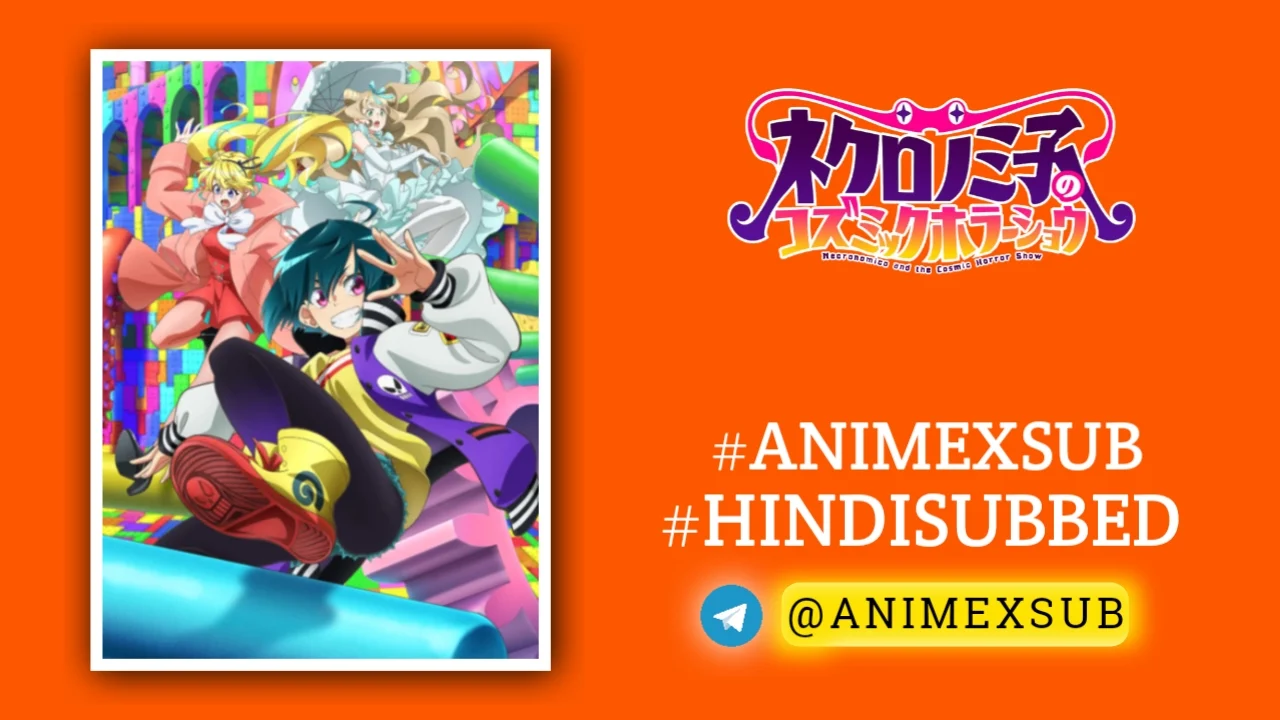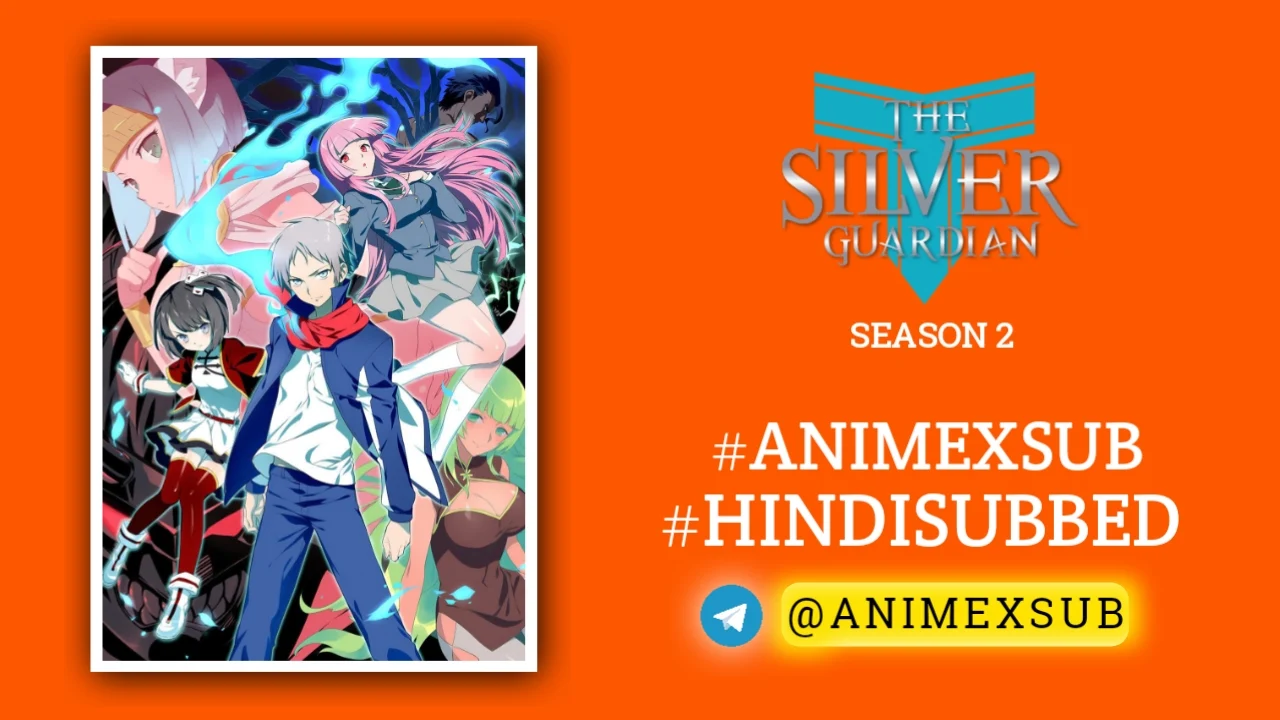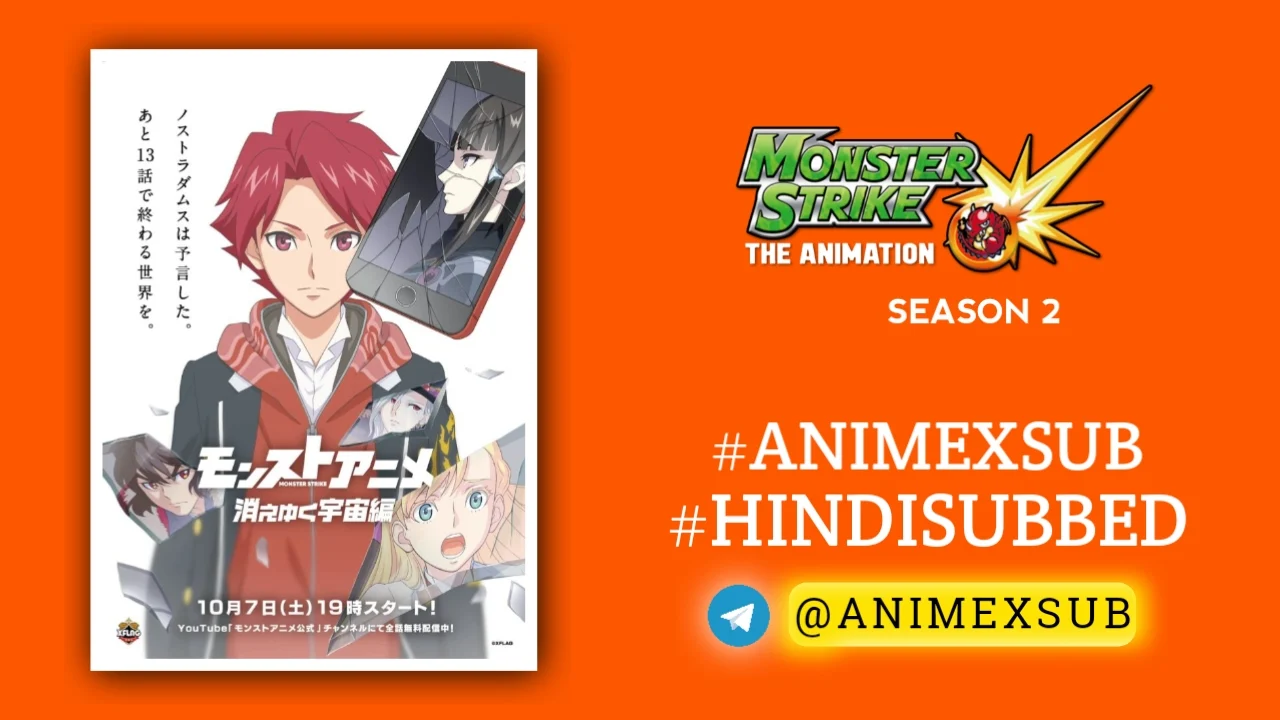
Necronomico and the Cosmic Horror Show Hindi Subbed [09/12] {Ongoing}

Necronomico no Cosmic Horror Show
Necronomico and the Cosmic Horror ShowSynopsis
We all need a chance to change our lives! The story follows Miko Kurono, who began her dream career as a livestreamer under the name "Necronomico" after graduating middle school. Amidst spending her days with childhood friend Mayu Mayusaka and rival Kanna Kagurazaka, she's introduced to a new VR game project!? Upon encountering the game, the girls start pursuing the 'irreplacable now'. (Source: Official site, translated)
Watch Trailer
Characters
Whispers from the Void: Unveiling the Enigmatic Premiere of Necronomico and the Cosmic Horror Show Season 1
In the shadowed corners of 2025’s summer anime lineup, where digital dreams bleed into ancient nightmares, emerges Necronomico and the Cosmic Horror Show—a series that defies conventional storytelling by fusing the frenetic energy of virtual streaming culture with the inexorable dread of H.P. Lovecraft’s mythos. Premiering on July 1, 2025, via Tokyo MX and streamed globally on Crunchyroll, this original production from Cygames and Studio Gokumi thrusts viewers into a VR death game orchestrated by the Great Old Ones. Directed by Masato Matsune and penned by Makoto Uezu, the season unfolds over 12 episodes, each a descent into madness where aspiring streamers confront eldritch entities in challenges that blur the line between entertainment and existential peril. What begins as a lighthearted pursuit of viral fame spirals into a cosmic farce laced with genuine unease, questioning the commodification of human fragility in an era of endless content creation.
Fractured Realities: The Core Narrative and Its Labyrinthine Plot Twists
At its heart, Season 1 chronicles the harrowing odyssey of Miko Kurono, a junior high graduate reimagining herself as the streamer “Necronomico.” Living with her childhood friend Mayu Mayusaka, Miko’s mundane struggles for online relevance shatter when top streamers begin collapsing mid-broadcast, drawing her into the enigmatic VR game “KADATH.” Accompanied by rival Kanna Kagurazaka—a beauty-focused influencer with a sharp tongue—and a cadre of eccentric allies like the enigmatic Eita, Miko uncovers that the game is no mere simulation but a sadistic spectacle hosted by Cthulhu and its kin, the Great Old Ones. These cosmic horrors, manifesting in grotesque yet comically exaggerated forms (think a giant chicken-like deity jeering from the sidelines), possess comatose players’ bodies to infiltrate the human world, turning streams into portals for madness.
The plot accelerates with relentless momentum: Episode 1 catapults Miko into KADATH after Mayu’s possession by Cthulhu, vowing her to slay the Old Ones and reclaim her friend. Subsequent installments escalate the stakes—Episode 2 introduces sanity mechanics as players band against Shoggoth hordes in an “academy” of malevolent gods; Episode 3 traps them in a timed escape from monstrous pursuers; while mid-season arcs like the Kyoto defense battle (Episode 7) and the real-world manifestation day (Episode 6) amplify the hybrid horror-comedy tone. By the finale, humanity teeters on collective insanity as the last game unfolds, revealing layers of betrayal, including Eita’s rule-bending manipulations that force moral dilemmas on the survivors. Uezu’s script masterfully weaves Lovecraftian insignificance—humans as playthings for indifferent gods—with modern satire on influencer burnout, where “going viral” literally risks devouring one’s soul. Yet, the narrative’s true innovation lies in its meta-commentary: streams within the show become unreliable narrators, glitching with viewer comments that foreshadow betrayals, creating a disorienting loop that mirrors the characters’ fracturing psyches.
Avatars of the Abyss: Dissecting Key Characters and Their Psychological Depths
Miko Kurono/Necronomico stands as the pulsating core, voiced with raw vulnerability by Riho Sugiyama. Her evolution from a fumbling, hope-fueled novice—quoting Osamu Dazai’s bleak philosophies on despair—to a resolute warrior wielding digital grimoires against eldritch foes embodies the season’s thematic purity. Miko’s arc probes the illusion of control in a content-saturated world, her streams evolving from desperate pleas for likes to defiant broadcasts that rally virtual allies, only to question if she’s merely entertaining the very gods she battles.
Mayu Mayusaka, brought to life by Manaka Iwami, serves as the emotional anchor, her possession by Cthulhu adding a tragic dimension. No longer just the supportive roommate, Mayu’s fragmented appearances—whispering cryptic warnings through distorted avatars—evoke the horror of lost agency, her comatose form a stark reminder of how fleeting digital connections can unravel into eternal voids. Contrasting this is Kanna Kagurazaka (Nana Hasumi’s debut role), the poised rival whose “cute” facade cracks under pressure, revealing a fierce intellect that turns beauty vlogs into tactical dissections of horror mechanics. Her rivalry with Miko fuels electric banter, but deeper interactions expose shared insecurities, transforming antagonism into a bond forged in survival.
Supporting cast like Eita (Reiji Kawashima), the sly game moderator with hidden agendas, and Tsugumi Tsukasa (Hazuki Ogino), a wildcard streamer specializing in occult lore, add multifaceted layers. The Great Old Ones themselves defy caricature: Cthulhu’s Mayu-mimicking form injects personal horror, while ensemble deities like the ribald Shoggoths inject absurd levity, their jeers mimicking toxic chat trolls. This ensemble dynamic elevates the series beyond trope-heavy death games, offering nuanced explorations of identity erosion—where avatars become prisons, and fame’s pursuit invites cosmic predation.
Spectral Visions: Animation, Sound Design, and Technical Mastery
Studio Gokumi’s animation strikes a deliberate dissonance, blending fluid 2D sequences for real-world streaming antics with deliberately janky CGI for VR segments, evoking the uncanny valley of Lovecraftian unease. The premiere’s obstacle course against Shoggoths, for instance, shifts from vibrant, streamer-cam aesthetics to warped, low-poly horrors that distort proportions mid-chase, heightening disorientation. While some transitions feel uneven—early episodes suffer from inconsistent line work—the style’s intentional “glitch art” pays off in climactic battles, where reality fractures into kaleidoscopic voids, syncing with sanity-drain effects that blur screen edges.
Evan Call’s score masterfully amplifies the epic scope: pulsating synths underscore VR dives, morphing into dissonant choirs during Old One confrontations, while the opening “Kakushō-ron” by VTuber Ryushen pulses with ironic energy, its lyrics on “confirmation theory” mocking the characters’ futile quests for truth. The ending “PANDORA feat. Noa” from Colorful Peach provides haunting respite, its ethereal vocals echoing the void’s call. Voice performances shine—Sugiyama’s Miko conveys escalating hysteria without overacting, while the gods’ guttural warbles add grotesque charm. However, the season’s technical shadow looms large: Crunchyroll’s initial subtitles were marred by AI-generated errors, including blatant “ChatGPT said:” prefixes in German tracks and inconsistent name spellings (e.g., Mayu as “Mako” or “Mai”), leading to lawsuits and fan backlash. Fixed in later episodes, this fiasco ironically mirrors the show’s themes of flawed mediation between worlds, though it initially alienated viewers.
Echoes of Eldritch Entertainment: Critical Reflections and Lasting Impressions
Season 1 of Necronomico and the Cosmic Horror Show carves a niche as a paradoxical gem— a horror series that laughs at its own abyss, critiquing the streamer economy’s soul-sucking grind through lenses of cosmic indifference. Early episodes’ bonkers pacing, cramming exposition into feverish montages, may overwhelm, but it builds to profound payoffs: the escape room (Episode 4) ingeniously twists psychological puzzles into sanity tests, while the finale’s mass madness arc delivers unflinching commentary on viral despair, where humanity’s “fun day” with manifested gods devolves into collective unraveling. Critics on platforms like Reddit and Anime News Network praise its originality, hailing the OP’s infectious vibe and the chicken-god’s meme-worthy antics, yet decry the subtitle debacle as a barrier to broader appreciation. Ratings hover around 6-7/10 on MyAnimeList, with fans lauding its “trippy comedy” over pure frights, though some lament the unimpressive CGI as undermining tension.
Ultimately, this season transcends its gimmicks, offering a purity of vision that probes deeper fears: in an age where lives are live-streamed for applause, what horrors lurk when the audience is truly otherworldly? Necronomico doesn’t just entertain; it lingers like a forbidden tome, inviting rewatches to uncover hidden glyphs in its chaotic tapestry. As of August 27, 2025, with the full season aired, it stands as a bold, if flawed, testament to anime’s capacity for next-level fusion—where the stream never ends, and the horror is eternally cosmic.






















